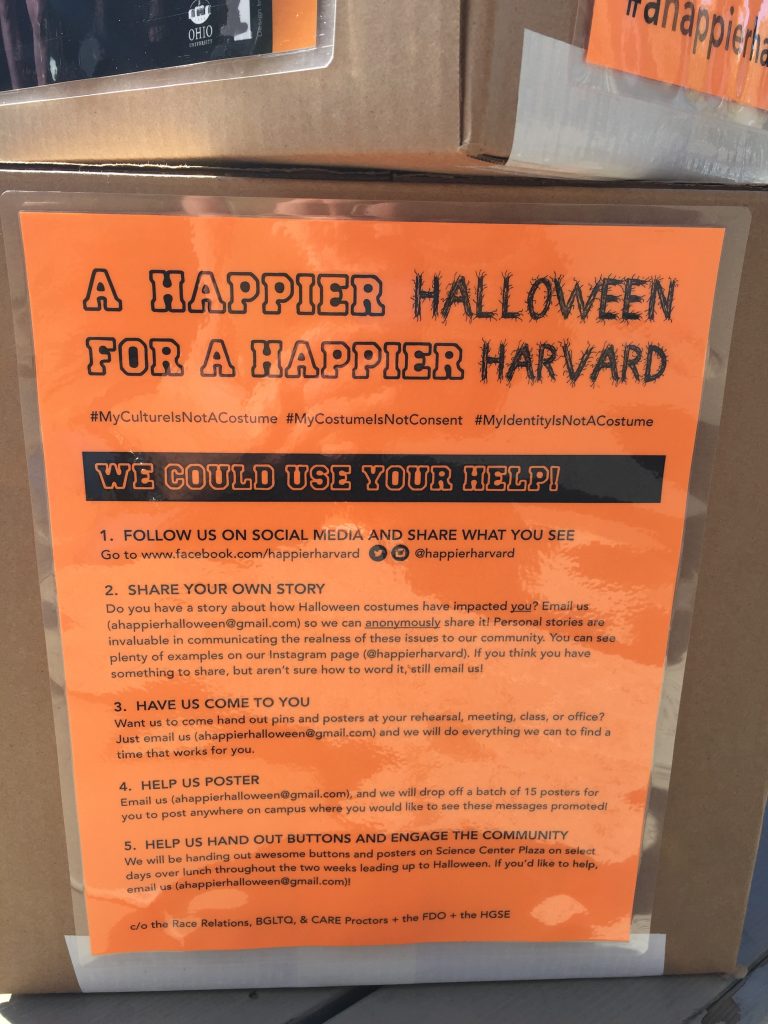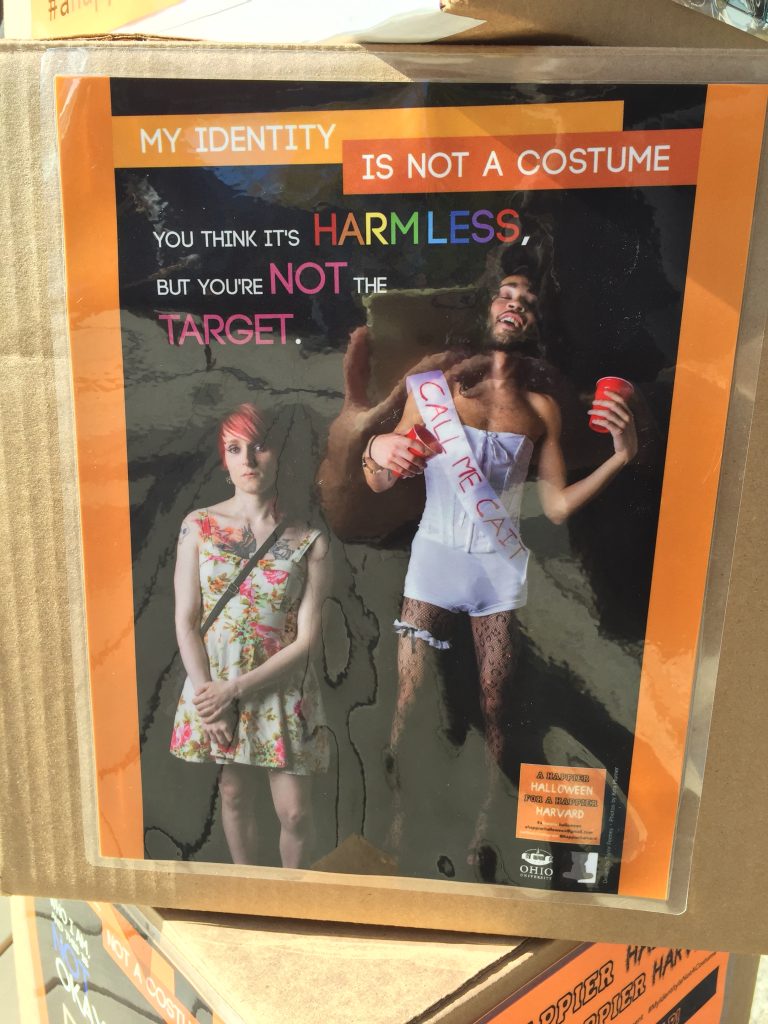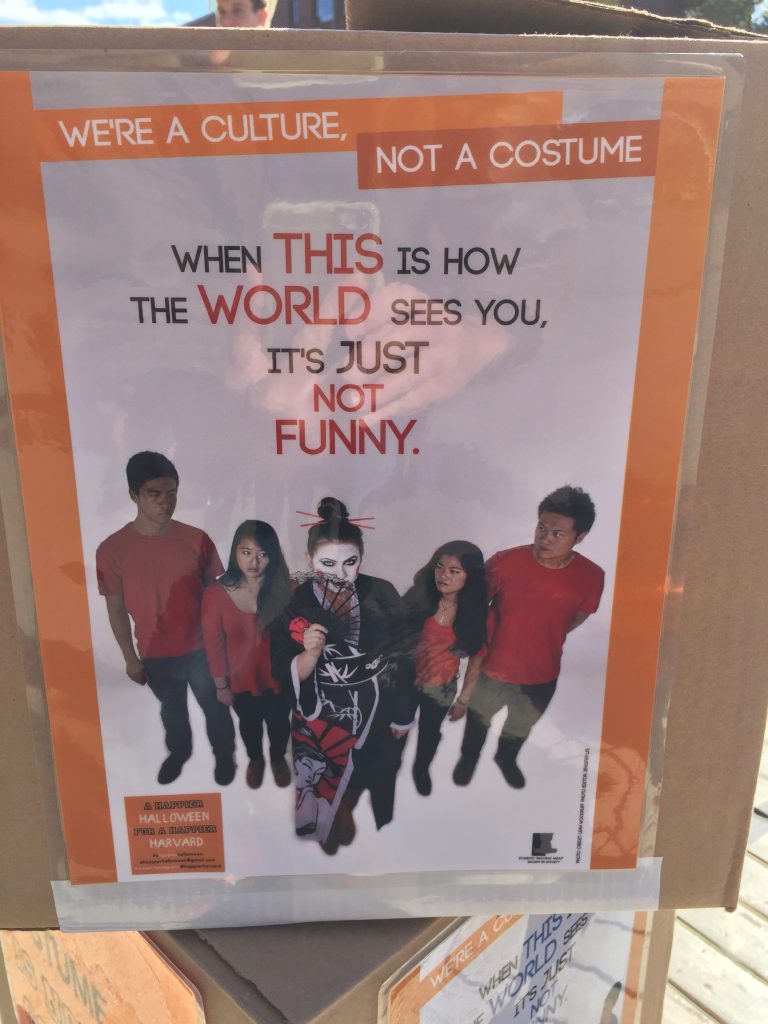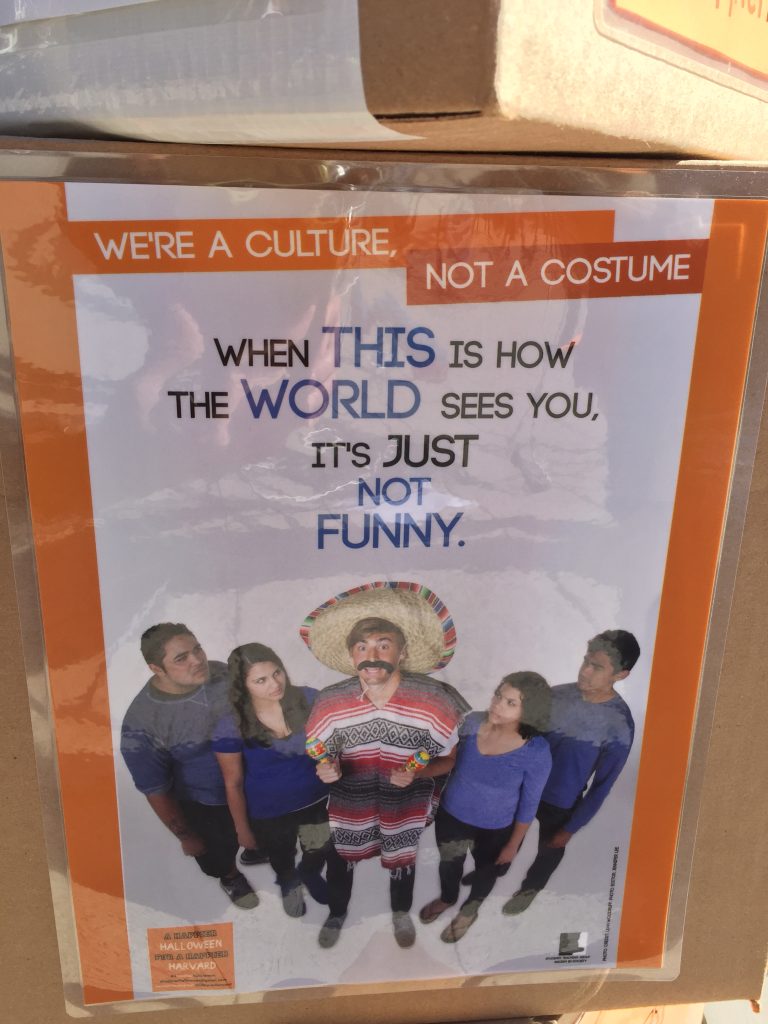A week before Halloween I learned that it is not just 6-year-olds who spend at least a week thinking about what to wear for Halloween. Here are some photos taken in Harvard Yard of a kiosk staffed by a couple of Harvard administrators from the HappierHarvard campaign. (The handout says that the staffed kiosk was operated for “two weeks leading up to Halloween.”)
One question raised by the above is whether the woman at the lower left is wearing a geisha outfit or a Noh costume. Either way, wouldn’t it be safe to say that she was wearing Japanese dress? And yet the students surrounding her don’t look Japanese. Did someone preparing the poster go out and find assorted “Orientals” to photograph? Does that imply that all Asian cultures are pretty much the same? And that’s not racist?
More:




Who decides who belongs to a culture? The current headmaster of one of the branches of Toda-ha Buko ryu (a Japanese martial tradition about 500 years old) is not Japanese. Would he be allowed to put on a kimono? Alternatively, should a 500 years old tradition die because no member of the ethnic group who created such tradition want to carry it forward?
What if Wiccans don’t think witch costumes are funny?
Seriously, though, at what point is it no longer ok to dress up as someone else?
In medical school one of my classmates dressed up as another classmate and everyone thought it was hilarious, other than the one guy he was making fun of. Same thing happened the next year in the class below me, but the problem was a white girl dressed up as her black classmate, so we all got a few extra hours of cultural sensitivity training.
Federico:”Would he be allowed to put on a kimono?”
It’s not a “costume” in that circumstance.
Federico: Is he allowed to wear kimono? If he is in Harvard Yard tonight and violently accosted by some Harvard students demanding that he take it off, probably there will be a higher-than-normal demand for “safe spaces.”